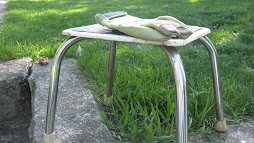
CORN EARWORM
Location
The Corn Earworm, aka Tomato Fruit Worm, Tobacco Budworm, Cotton Bollworm, is such a successful pest that it lives practically everywhere in the world between the parallels of 50° north and south latitudes. That's from the bottom half of Canada to almost the tip of South America.
Appearance and Habits
The earworm winters as a pupa in the soil. A brownish-olive moth coming out in spring to lay 500 to 2500 eggs, one at a time, on various host plants, including weeds. The eggs are dirty white and dome-shaped. After hatching, the caterpillars grow to nearly 2" long, have yellow heads, and vary from yellow to brown to green with lengthwise alternating light and dark stripes. There are several generations in a season; in corn, first-brood larvae eat into developing leaves, while larvae of later broods start at the silk and bore into the tip of the ear, eating the kernels down to the cob and piling up moist castings of excrement. In tomatoes the worms feed on the partially ripened fruit, restlessly moving from one tomato to another; pods of lima beans are sometimes invaded.
Management
Sweet corn is protected by applying mineral oil with a medicine dropper into the silk at the tip of the ear. (1/2 - 3/4 of a dropper). This should be applied after the silk turns brown.
Corn varieties with a tightly closed ear fare better at keeping the corn borer away; some farmers have aided the plants by attaching closepins to the ear tips to physically block out the worms.
Other strategies include clipping the silk every four days, and planting marigolds near the corn.
In southern gardens, the tomato fruit worm may be controlled by applying pinches of bait to the fruit clusters.
Pictures
![]() Corn Borworm (Life Cycle, page 51): A. larvae, brown and green striped caterpillars; B. overwintering pupa in soil; C. female moth laying eggs on corn silk; egg enlarged; D. full-grown worm feeding in man of frass at tip of ear
Corn Borworm (Life Cycle, page 51): A. larvae, brown and green striped caterpillars; B. overwintering pupa in soil; C. female moth laying eggs on corn silk; egg enlarged; D. full-grown worm feeding in man of frass at tip of ear


No comments:
Post a Comment